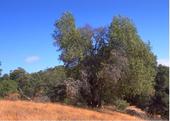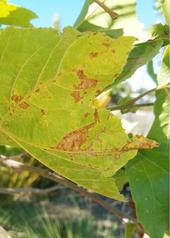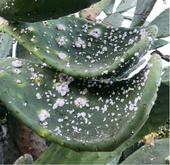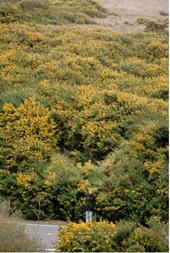- Author: Steven Swain

Sudden oak death (SOD) is a disease syndrome that has killed millions of native oak trees (Figure 1) along the west coast of the United States, from Big Sur in California up to Southern Oregon. The disease may involve several organisms, but its main driver is the fungus-like organism (known as water mold), Phytophthora ramorum. This plant pathogen is spread in the springtime by windy rainstorms. It infects the bark of oak trees, frequently creating bleeding trunk cankers that interfere with water uptake and sugar transport.
Death of SOD-infected trees can be accelerated by attacks from bark and ambrosia beetles. In the absence of beetle attacks, infected oaks may take years to die.
Many common...
- Author: Belinda Messenger-Sikes

Have you been seeing a lot of defoliated sycamore trees recently? Sparse foliage and early leaf drop on sycamore trees might be due to anthracnose. The cool, wet spring in many parts of California provided the perfect conditions for this disease. Anthracnose is a common fungal disease sometimes called leaf, shoot, or twig blight. It can cause twisted, distorted branches in American sycamore, some varieties of London plane trees, and California sycamore trees. Sycamore anthracnose is primarily an aesthetic concern since it usually doesn't kill established trees.
Symptoms
Take a close look at the fallen leaves for the characteristic irregular blotches caused by this disease. Anthracnose can...
- Author: Lauren Fordyce

It may be after Labor Day, but some of your plants may still be wearing white, breaking that long-standing fashion “rule”! While many of us don't adhere to this old rule for our wardrobes these days, you may care about white stuff on your plants this time of year.
There are several white colored pest insects and diseases that you could be noticing on your plants.
Scales
Several types of scale insects are white. Each has their own host preferences, or plants they feed on.
- Cochineal scales feed only on cacti, usually prickly pears. On the outside they are white and waxy but...
- Author: Luca Carmignani

How can weed control help with wildfire preparedness?
Wildfires are part of California's ecosystems, and they do not have to lead to the destruction of structures and livelihoods. Each of us can contribute to improving wildfire resilience, from individual homeowners and businesses to entire communities. Managing the vegetation and landscape around our homes can play a crucial role in preventing the spread of fires and sources of ignition.
Given the large amount of rain in the winter of 2022-2023, you might have experienced a surge in annual grasses and fast-growing plants that cover most of the ground around your home and community. In my area, I observed invasive species like wild oats and mustard growing...
- Author: Mackenzie Patton

The Invasive Pest Spotlight focuses on relevant or emerging invasive species in California. In this issue we are covering brooms, a group of invasive shrubs.
Invasive Broom facts
Brooms are upright shrubs in the legume family that typically produce small, yellow, pea-shaped flowers. Shrubs range from 3 to 10 feet tall. They produce flowers from mid spring to summer and produce seed pods in late summer. All brooms are prolific seed producers, with a single shrub producing as many as 2,000 to 3,500 pods containing up to 20,000 seeds.
While brooms are attractive plants, they grow in dense stands that outcompete many native plants. These dense stands are highly...


